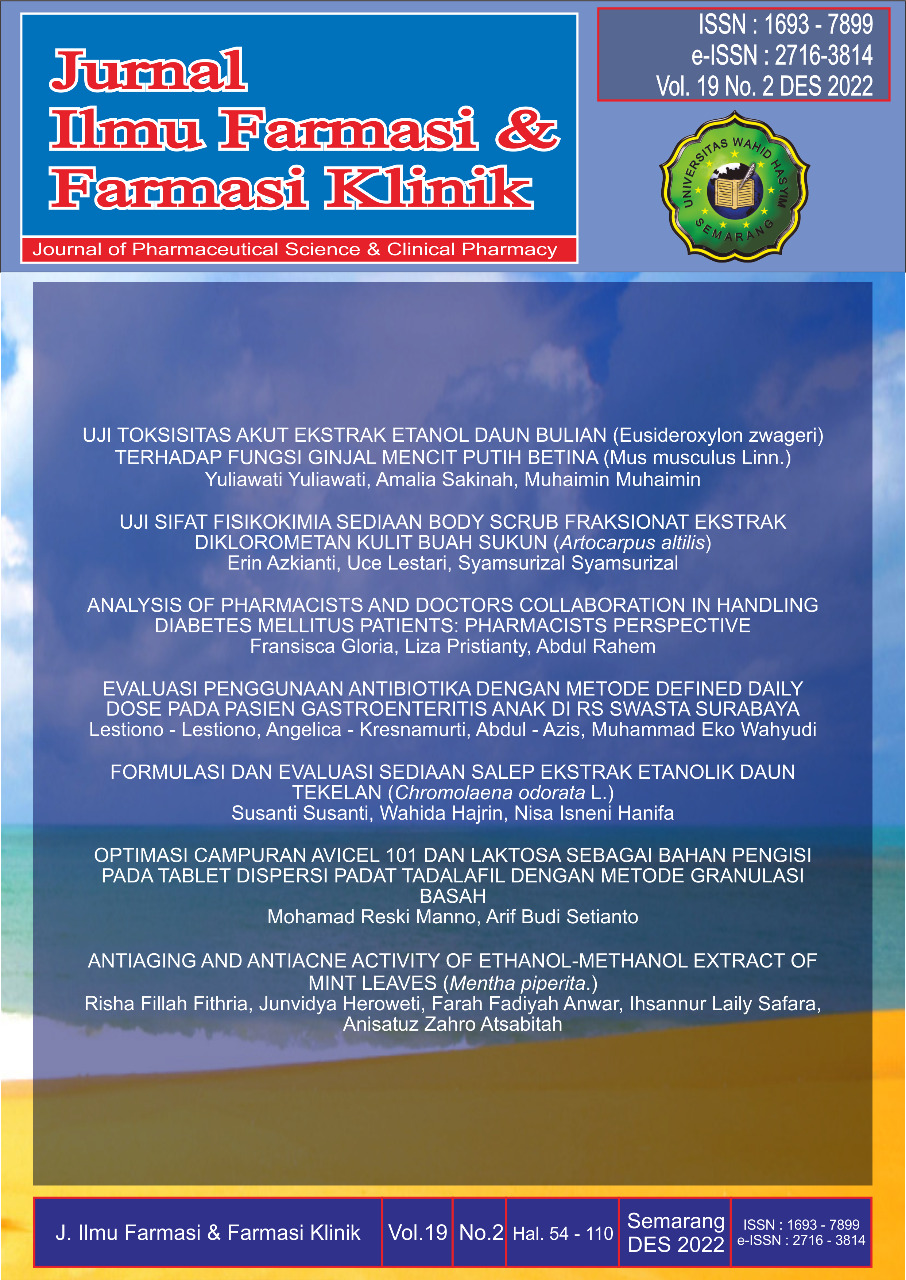Main Article Content
Abstract
ABSTRACT
Â
Acne and premature aging are skin problems that are often experienced by Indonesian women. Mint leaves contain flavonoids which are known to be antibacterial and antioxidant. This study is an experimental study with pre and post test control group design that aims to determine the antibacterial activity of ethanol-methanol extract of mint leaves (EEMDM) against Propionibacterium acnes on the back of rabbits and antiaging activity on the hind limbs of rats. Mint leaves were extracted by maceration method using ethanol (70%) – methanol (1:1). Antiacne activity test using 5 rabbits induced by P.acnes intradermally on the back of shaved rabbits. The area was treated with K1 (clindamycin 0.1%), K2 (DMSO), C (EEMDM 30%), D (EEMDM 35%), E (EEMDM 40%). Antiaging activity test using 12 Wistar rats: 1 group as normal control (K1) and 5 test groups induced by UV light 311 nm and then treated with: C1 (EEMDM 20 mg/ml), C2 (EEMDM 40 mg/ml), C3 (EEMDM 60 mg/ml), C4 (EEMDM 80 mg/ml); and K2 (DMSO). The antiacne activity test parameter was a decrease in the diameter of the erythema. Tukey's Post Hoc test results showed that EEMDM concentrations of 30%, 35%, and 40% had antiacne activity. Antiaging test parameters in the form of decreased scores of wrinkles, erythema, and exfoliation. The results of the Kruskal Wallis test (p>0.05) showed that EEMDM concentrations of 20, 40, 60, and 80 mg/ml had no antiaging activity.
keywords: antiacne, antiaging, ethanol-methanol, mint leaves
Â
